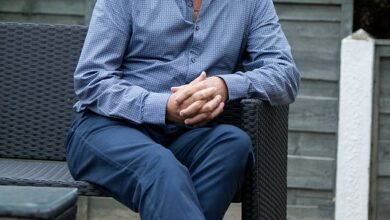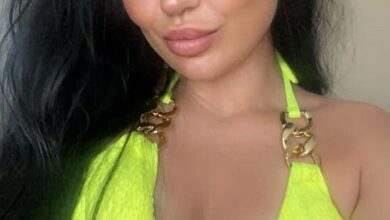Trendy parenting technique used by millions could stunt babies’ development and pose a ‘public health problem,’ experts warn
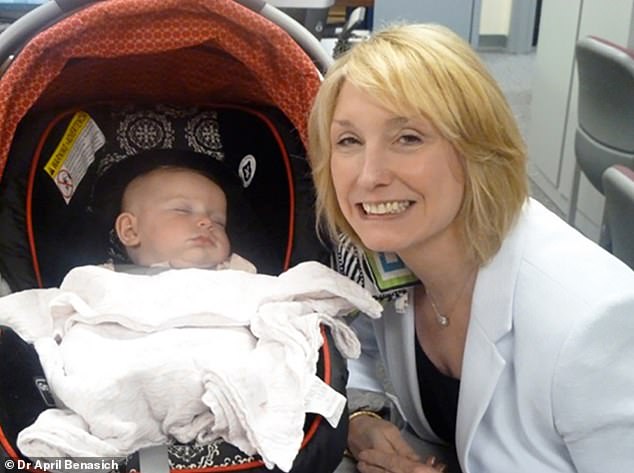
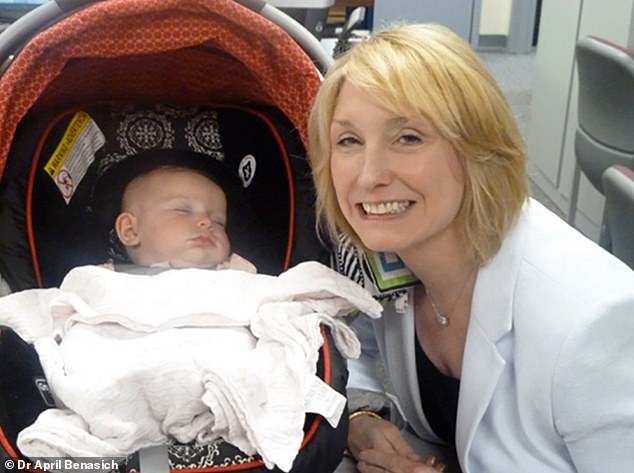

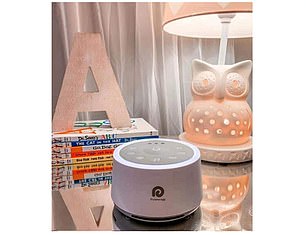
Parents are doing everything they can to get their babies to sleep, but experts are warning against the popular trend of using “white noise.”
The sound is similar to television or radio static, and whether it comes from a device or a phone app, it has become hugely popular. Up to a third of parents use some form of background noise as a sleep aid for their babies.
Sleep experts and parenting influencers claim that constant background noise makes the brain less likely to focus on sudden, disruptive noises that could disrupt concentration or wake people up.
But experts now realize that white noise, and similar pink or brown noise, may do more harm than good for children’s language development.
According to Dr. April Benasich, a leading sleep expert at Rutgers University, it could even lead to a “public health problem.”

Dr. April Benasich’s work with infants raises concerns about the effect white noise could have on their language development
A questionnaire The Sleep Doctor found that 37 percent of parents said their children needed some type of background noise to help them fall asleep. The most popular method (45 percent) was white noise.
Dr. Benasich, who is also director of the Infancy Studies Laboratory at Rutgers, told DailyMail.com that using sound with babies can disrupt the development of their language skills, which begins even before they are born.
The monotonous tone of white noise can disrupt a child’s “acoustic mapping,” the network in the brain that helps babies understand and learn language.
Babies’ brains are constantly interpreting every sound to build language networks. They pay attention to what sounds are repeated to determine what is important to listen to and to develop their native language.
A baby’s brain can distinguish between different sounds within a tenth of a millisecond. This allows the brain to focus on the smallest unit of language and stimulates brain connections to process sounds.
Dr Benasich, who has worked with 5,000 families in her lab, told DailyMail.com: ‘[The brain] not sure what it’s going to listen for but it does listen for acoustic sounds.
“Young children can hear the differences between every sound in the world… sounds made up of tiny, tiny changes.”
While hearing these acoustic variations is important when a child is awake, it’s especially important when babies are sleeping, Dr. Benasich says, because that’s when most of the brain’s neuroplasticity — the ability to evolve and adapt by creating new neurons and networks — occurs.
But when parents use white noise, babies, who sleep 12 to 18 hours a day, are exposed to it for hours at a time.
And because there is no variation, Dr. Benasich says it “tells the brain that it doesn’t need to listen to this because nothing is happening.” So the brain doesn’t create networks, wasting crucial time to develop language skills.
Gabriella, a 35-year-old from New Jersey, used white noise with her first son and started using it with her second until her pediatrician suggested she switch to something with variety. Now her youngest falls asleep—and stays asleep—to Twinkle Twinkle Little Star.
She told DailyMail.com: ‘It drives us a bit crazy listening to that song all night, but it’s better for him to listen to that than white noise.’
Dr. Benasich told this website that she’s “not a big fan of social media,” but a few years ago she saw influencers and parents posting about white noise.
She said: ‘When I found out that all the parents were using white noise… I thought, oh my God. What are people doing to their children? I think it’s going to be a public health issue.’

Babies need exposure to variations in sounds to aid their language development, Dr April Benasich told DailyMail.com
Dr. Benasich and her team worked with influencers and sleep consultants and found that while they had been informed about the benefits of white noise or had read articles touting the sound, they had not read actual studies. These were poorly conducted and came to insignificant conclusions.
She thought, ‘Oh my god, where are [people] where to get this information from.’
However, when Dr. Benasich tried to raise awareness about the issue, she was met with criticism: “The backlash was astonishing. We asked ourselves, ‘Why are people so crazy about this?’
“They’re so invested in it and they don’t want to hear the science. There’s no evidence that you’ve specifically harmed your child. We would say there’s no hard evidence that this is going to cause lasting problems, but we don’t know.”

White noise can come from a phone app or a sound machine (stock photo)
Sarah, a 37-year-old mother from New York, told this website that she used white noise for her baby until a friend told her about the dangers.
“I adjusted the sound on his device on the spot through my phone while he was sleeping,” the mother said.
Dr. Benasich, who created her own neuroscience-based sound machine called Sleep smarterrecommends soundscapes with any kind of variation — even small ones like ocean waves or a heartbeat.
She told DailyMail.com: ‘You want every child to have the benefit of everything they can to support them… Parents just don’t really understand what happens when the brain is preparing and that’s sad because we should have gotten that message out a long time ago.
‘There is some information available, but people don’t understand how important the acoustic environment is.’
Dr. Benasich also said it is difficult to educate families because they can’t actually see the changes.
She told this website: ‘They can’t see that their [child’s] “It’s like the brain changes or the job is better, but we know that because we’ve seen it.”
And while she often encounters parents who say, “Well, I’ve used white noise with all my kids and they’re all fine and their vocabulary is really good,” she asks them, “But how much harder have you made the brain work to compensate for that? [using white noise]’?

